Venice - Greece
(Photos WS)
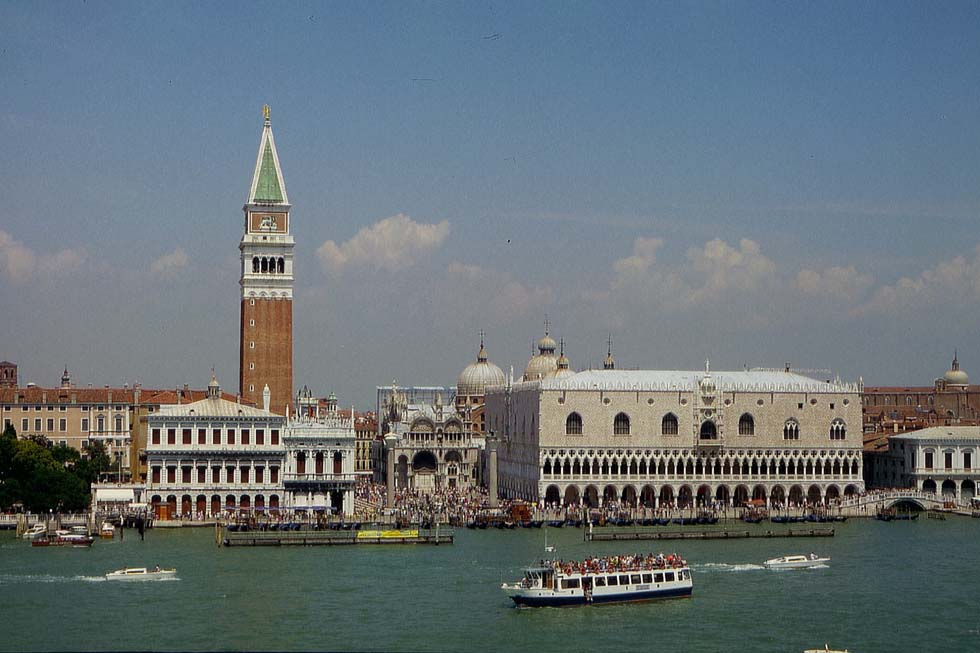
Venice, San Marco
Venice, San Marco, during summer months – that’s Europe’s most popular meeting-point for tourists, crowded with ten thousands of visitors from every European country, from America, Japan, Middle East… And when you, after a coffee in the famous Caffe Florian, would be waiting on a weekend afternoon at the Canale della Giudecca, near the wooden landing-stages of the gondolas, you might have seen in that year 2007 passing by the 30,000-ton ferries of ANEK and Minoan, bound for Greece, and some even larger cruise ships. On a Saturday in June it was the 30,000-ton “Seven Seas Navigator” of Regent Seven Seas Cruises, followed by the “MSC Orchestra”, a ship of c.90,000 gt, the steep stern rising like a skyscraper, and the sleek 69,000-ton “Spendour of the Seas” of Royal Caribbean, every ship accompanied by two tugs.
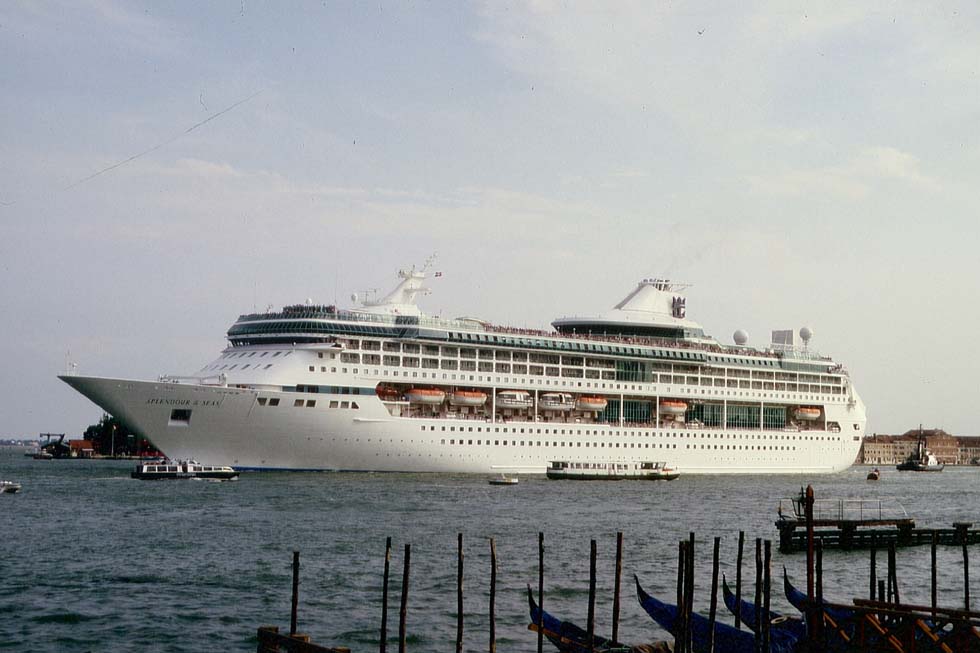
“Splendour of the Seas”, passing the Canale della Giudecca, 2007
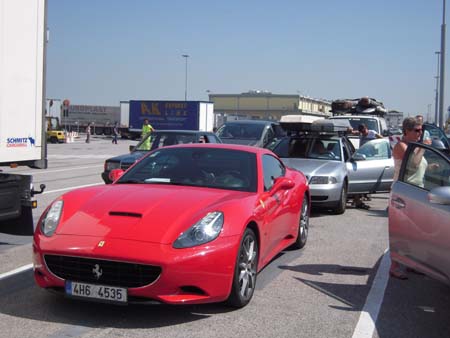
Ferrari of Czechia to be loaded to the “Olympia Palace”, 2011
|
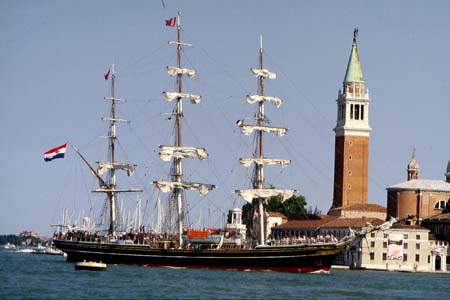
“Stad Amsterdam”, Venice 2009
|
After the night spent in one of the ancient noble villas of the Veneto, converted into a hotel, the next day on that day in June 2007 we approach Venice port by motorcar. Trucks, many cars and a few buses are being loaded onto the ANEK ferry “Sophocles V.”, bound for Patras, Greece. From the upper deck of that 30,000-ton vessel (the ex-Japanese “Hermes”, refurbished in a sober modern style) we see on this day the gigantic “Costa Serena”, a 112,000-ton megaship, completed just a few months before, and the smaller “MSC Armonia”, ex “European Vision”, in the neighbouring cruise ships’ dock. Far away, in Mestre on the mainland, the Fincantieri shipyard is visible, with the black-capped red funnel of Cunard’s “Queen Victoria”, expecting completion. Cargo ships for Mestre are coming from the south. From the Canale de la Giudecca on the eastern side of the port, the “Zenith”, a Celebrity 47,000-ton midsize ship, approaches, the blue funnel sporting new Pullmantur markings. And a tug boat waits for another Celebrity vessel, the 90,000-ton megaship “Millenium”. Cautiously, but without assistance by the tug, she enters the dock, known as a difficult manoeuvre, without doubt facilitated by the pods.
Departure time is 12 o’clock at noon. The ferry casts off and moves slowly along the cruise ships’ dock, where the giants are overtopping the brick-red old buildings of the seaport quarter. After entering the Canale della Giudecca, we are passing the classic Venetian palaces and churches, surrounded by the crowd of tiny “vaporetti”, the local ferry boats, by private yachts and by small tourist boats. In front of the Piazzetta, proudly flanked by the Bell Tower and the Palazzo Ducale, the ship slides along, admired by an immense crowd of spectators, leaving San Giorgio Island on starboard and Santa Maria della Salute behind. After almost an hour a boat approaches from Lido Island, calling for the pilot. The last lighthouse appears on port side, then the “Sophocles V.” reaches the open sea, the light-blue Adriatic, simmering under the midday sun.
The sea voyage has begun, with sitting on the sun deck and doing nothing…or taking a drought beer together with a Greek gyros from the grill at the bar close to the pool, where children are playing. What a relaxed journey compared to the stressing car ride to Venice…
Years ago and over decades also Trieste was a port of embarkation for Greece. That city has always been an interesting site, spreading her ancient Habsburg charm. In the far background towards the north, Miramar Castle is rising on a cliff. For a number of years it served as living place of Archduke Maximilian of Austria. From there he embarked in 1864 to come to the throne Mexico, where he was executed three years later. Turning southward, the ship passes along the peninsula of Istria with its pine-tree forests, off and on a basilica’s steeple, hidden in a bay the Slovenian port of Koper and far away the bald Karst mountains. After three hours the Croatian port of Pula, once the Austrian naval base, comes into view. Then the coast and the islands are remaining behind. Rijeka, the former Fiume, is too far away, out of sight. The course is towards the open sea.
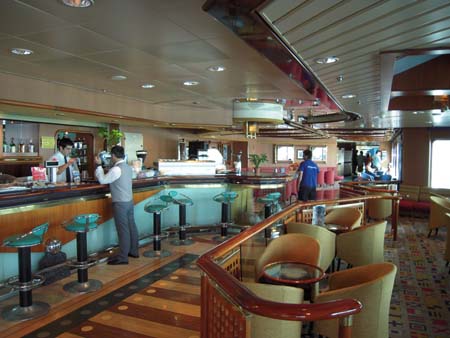
“Ikarus Palace” and ...
|
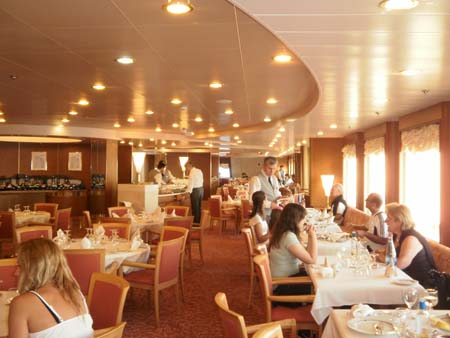
... “Olympia Palace”, Minoan Lines, Venice – Patras 2010, 2011
|
The sun has set down. It’s dinner time. The self-service is o.k. and the a la carte restaurant even better. On that evening five waiters serve the twenty five guests. The excellent wine is from Crete Island and the Tsigoudia digestive, too. Most of the truck drivers are sitting in the lounge (one explains us the way to Holland he generally is taking) and the backpackers have already fallen asleep on deck. Our thoughts go back to romantic Venice (and the author is remembering his first voyage from Germany to that town half a century ago, by bicycle). The map is showing the coast of Croatia and Montenegro, far away in the east.
Next morning, after sunrise, luckily for those who had spent the night in a de-luxe cabin, one can watch the arid steep mountains of Albania passing by. A ferry of Adriatica or Venturis may be crossing for Durres. It’s a lonely coast. Only off and on the few houses of a remote village are visible.
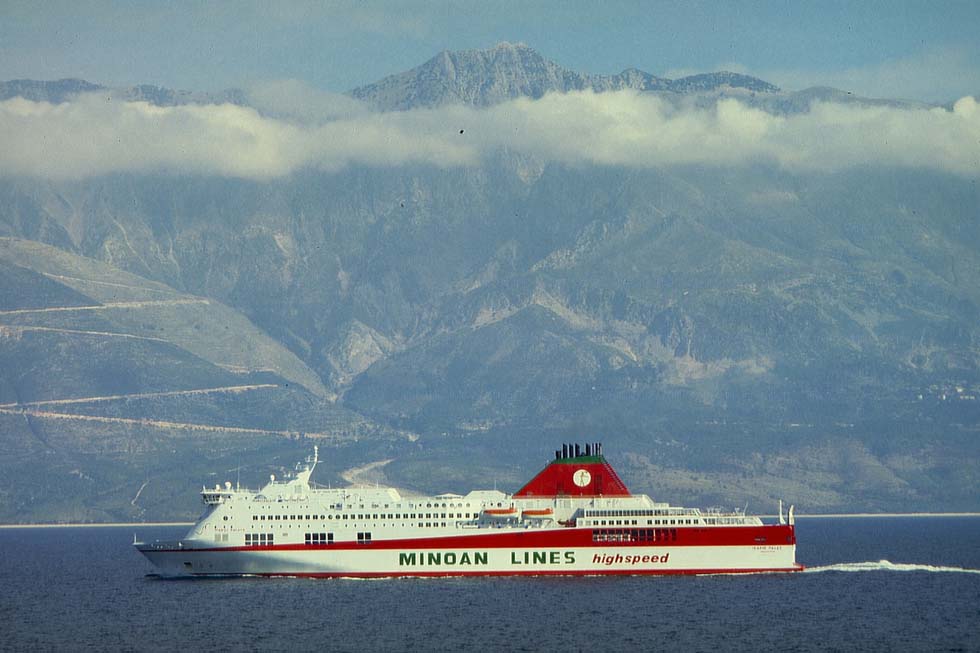
“Ikarus Palace” off the Albanian coast, 2005
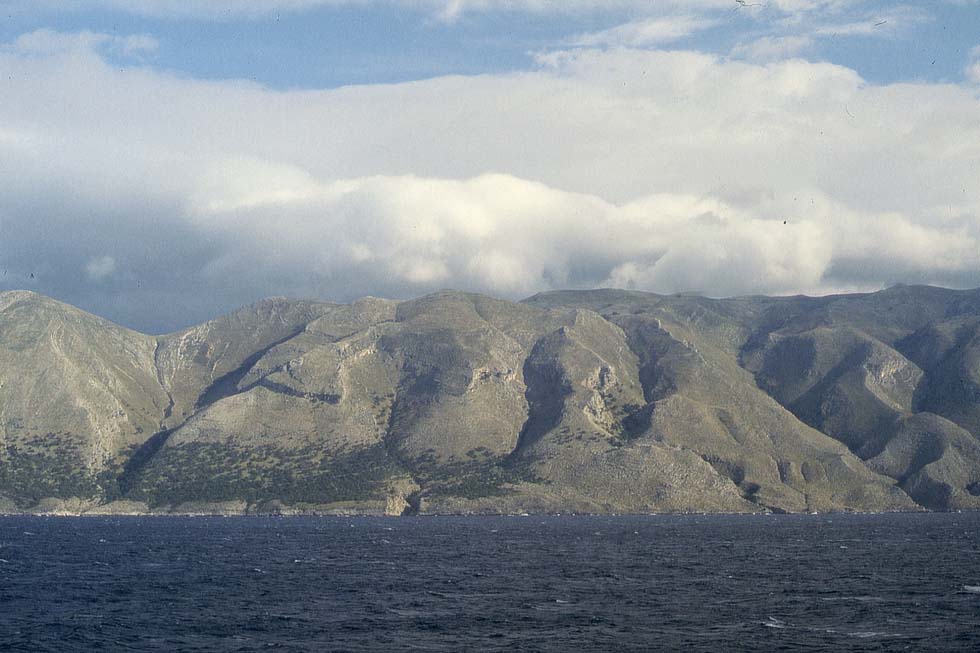
Albanian coast
At starboard the island of Corfu comes into view, mountainous, dark-green, with white villas and nice beaches. Passing a strait and a little lighthouse placed on a malicious reef, the ship enters first the Greek mainland port of Igoumenitsa. Trucks and a Slovenian bus leave the ferry. Years ago lots of Turkish trucks have disembarked there, thus bypassing war-struck Yugoslavia, but now they use the highway via Serbia.
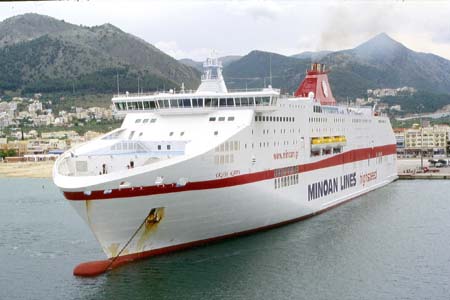
“Cruise Europa” Patras – Ancona, Igoumenitsa 2010
|
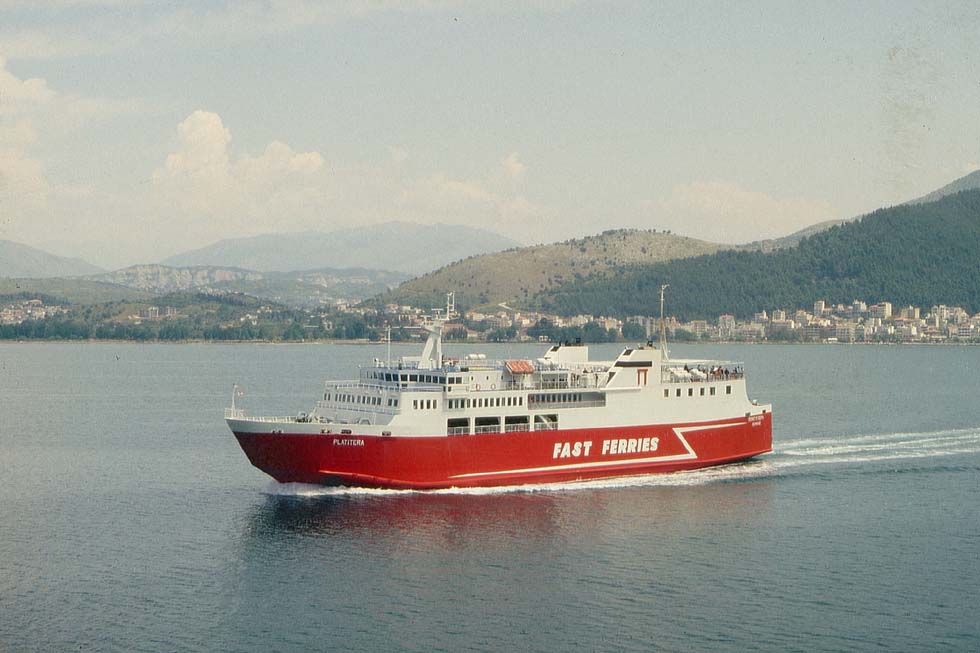
“Platitera”, Panagiotakis Group, Igoumenitsa 2004
|
Next port-of-call is Corfu or Kerkyra, as the Greek use to call their once Venetian city, protected by two mighty forts. Local ‘Fast Ferries’ of Panagiotakis and a “Flying Dolphin” hydrofoil enter the port, on that day towered by the “Artemis”, a 45,000-ton cruise ship of P&O, once the “Royal Princess”.
About a passage from Brindisi to Patras in the early 1960s a wonderful lady had reported: it was actually a steamer; one could have a look into the engine room and feel the heat coming from. Somewhere, possibly at Corfu, people mounted with their animals (unthinkable in our days), and the captain offered to the then student to spend the night in his cabin. He would stay anyway on the bridge. She hesitated to accept…
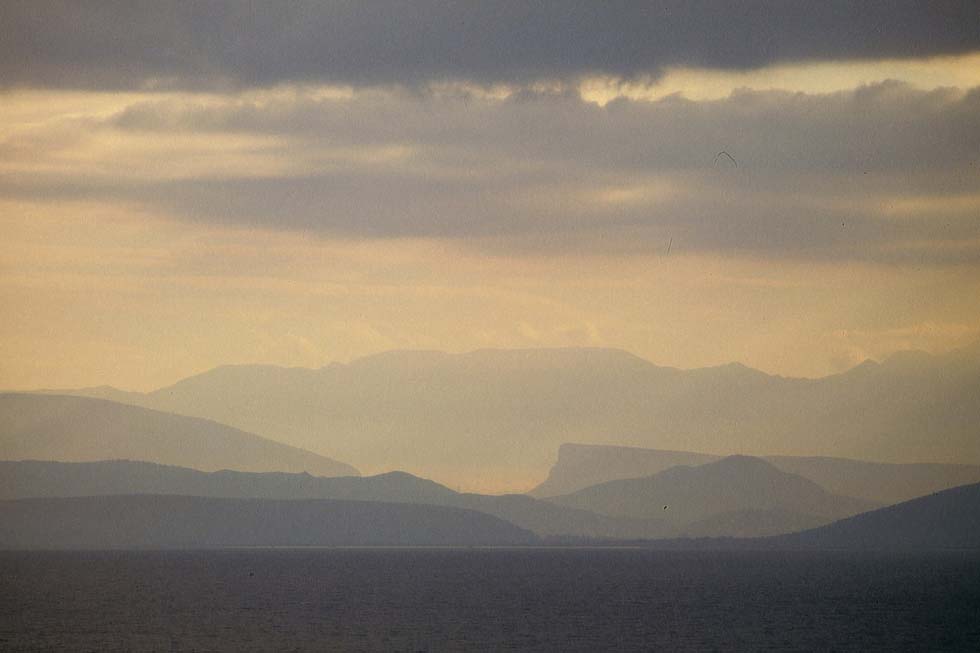
Greek coast near Igoumenitsa
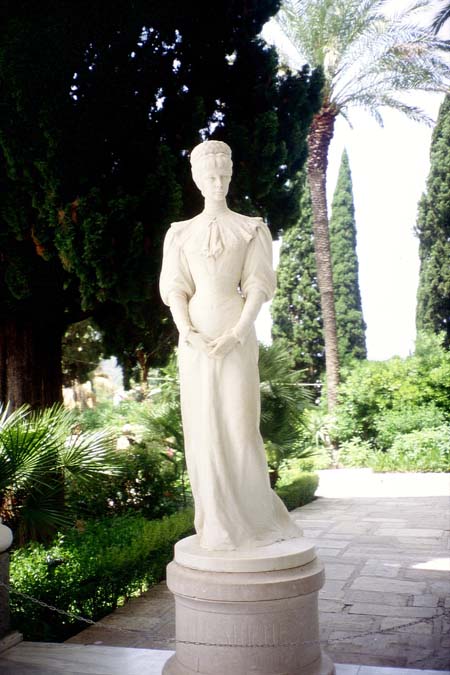
Sissi in Corfu
|
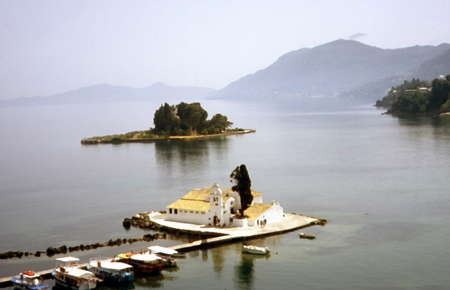
Corfu
|
Past the lovely shores, the “Sophocles V.” is heading southward. Somewhere hidden between the forests on the green hills must be the Villa Achileon, having been erected for the Austrian Empress Elisabeth, her remembrance immortalized by the movie “Sissi”. After her death the palace was acquired by the German Emperor Wilhelm II.
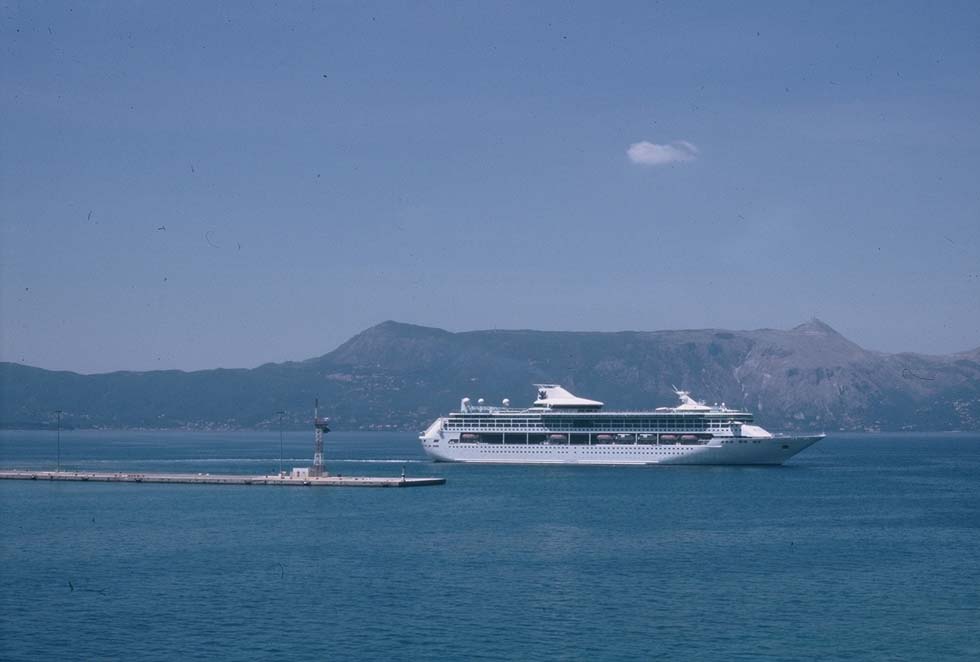
“Splendour of the Seas”, Corfu 2009
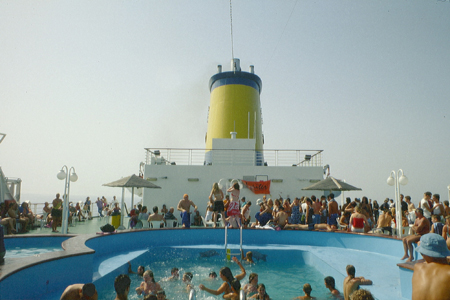
“El. Venizelos” Trieste – Patras, 2003
|
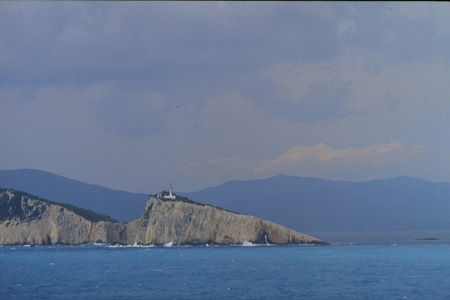
Lefkada
|
In the late afternoon the “Sophocles V.” passes a lighthouse on a white rock. It’s the cape of Levkas or Lefkada Island, where the ships coming from Italy alter course towards the south-east. At Levkas the greatest poetess of ancient Greece, Sappho, is said to have committed suicide by jumping from that wild rock, lovesick. The voyage continues past Ithaka island at starboard, where historians have tried in vain to discover the palace of Odysseus. Now they consider Kefallonia, hidden behind Isaka, being the place where his wife Penelope waited twenty years for his return.
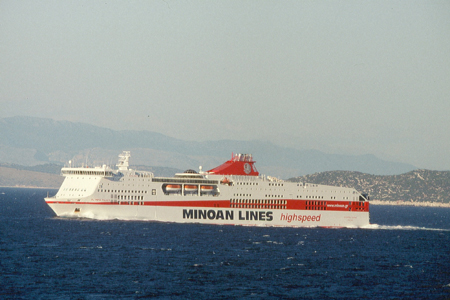
“Olympia Palace” Patras – Ancona 2008
|
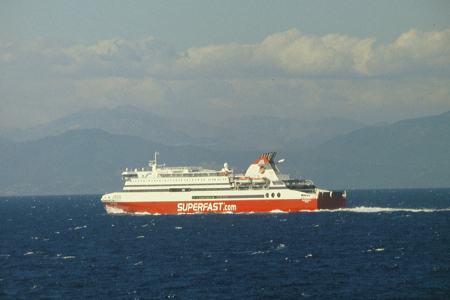
“Superfast XI” Patras – Ancona 2008
|
When the setting sun casts its last rays on the sea and the surrounding mountains, the car ferries which had left Patras for Italy are coming by, first the “Ionian King” of Agoudimos, then a Blue Star ferry, the fast “Europa Palace” of Minoan, the “Erotokritos T” of Endeavor Line, a Superfast and a Strintzis ferry. At nine o’ clock in the evening the “Sophocles V.” arrives at her terminus Patras. For passengers without a car, a special bus for Athens and Piraeus was announced. Disembarking the motorcars is chaotic on that day. Another Mercedes driver, coming from Holland and going to his native country, the Republic of Georgia, via Istanbul and Anatolia, can’t start his car. We help each other and are parting with shake-hands, like old friends. Then the travel by motorcar through Greece can begin….
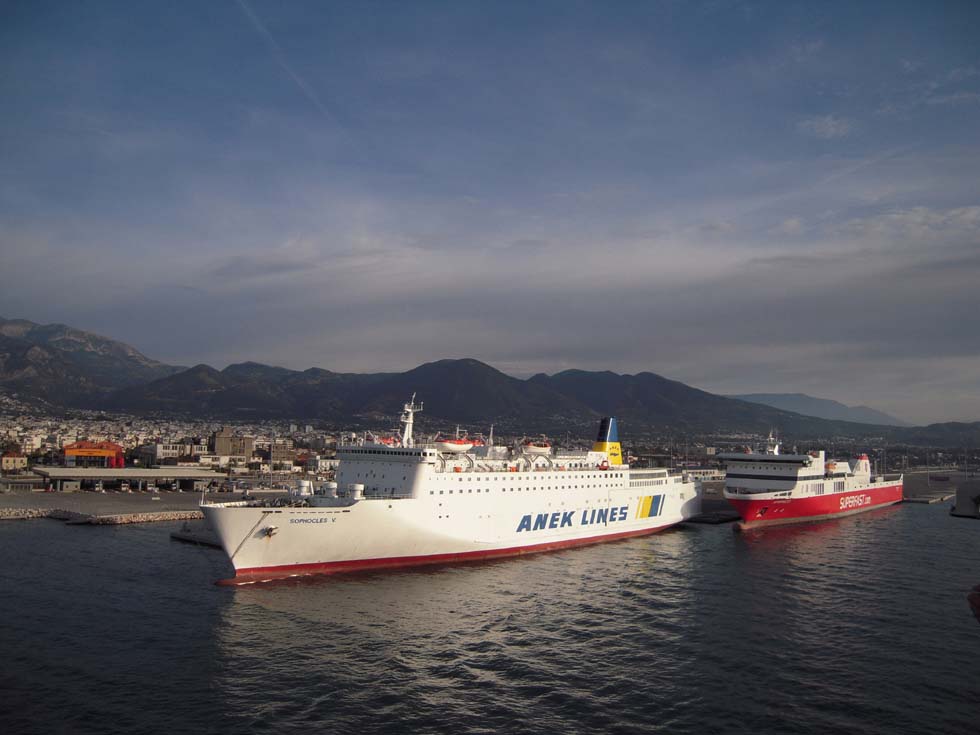
The “Sophocles V.” of ANEK and the ro-pax “Superfast II” at Patras, 2011 (WS)
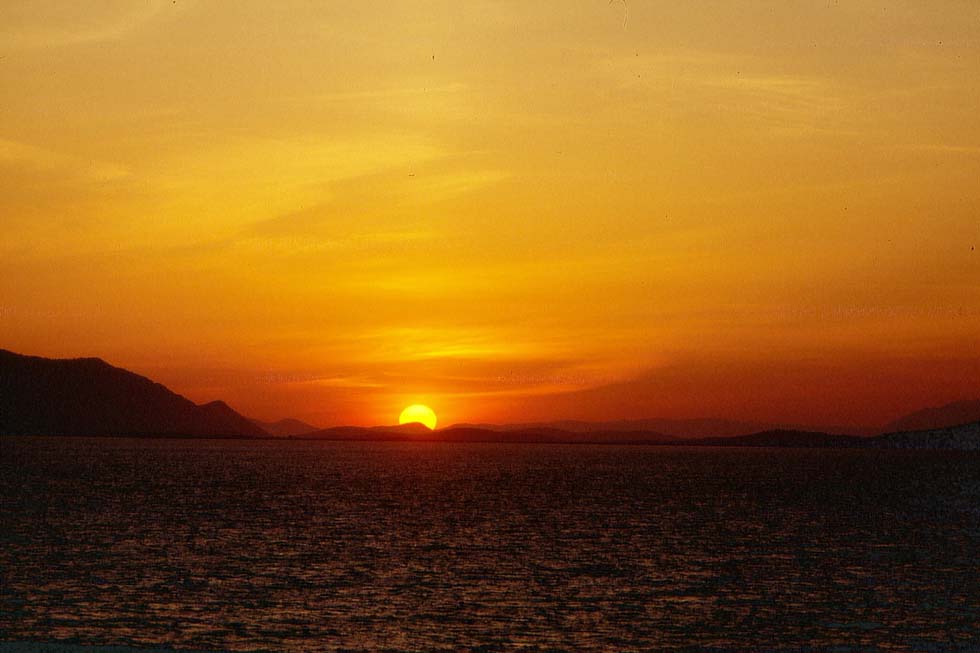
Approaching Patras in the evening
|